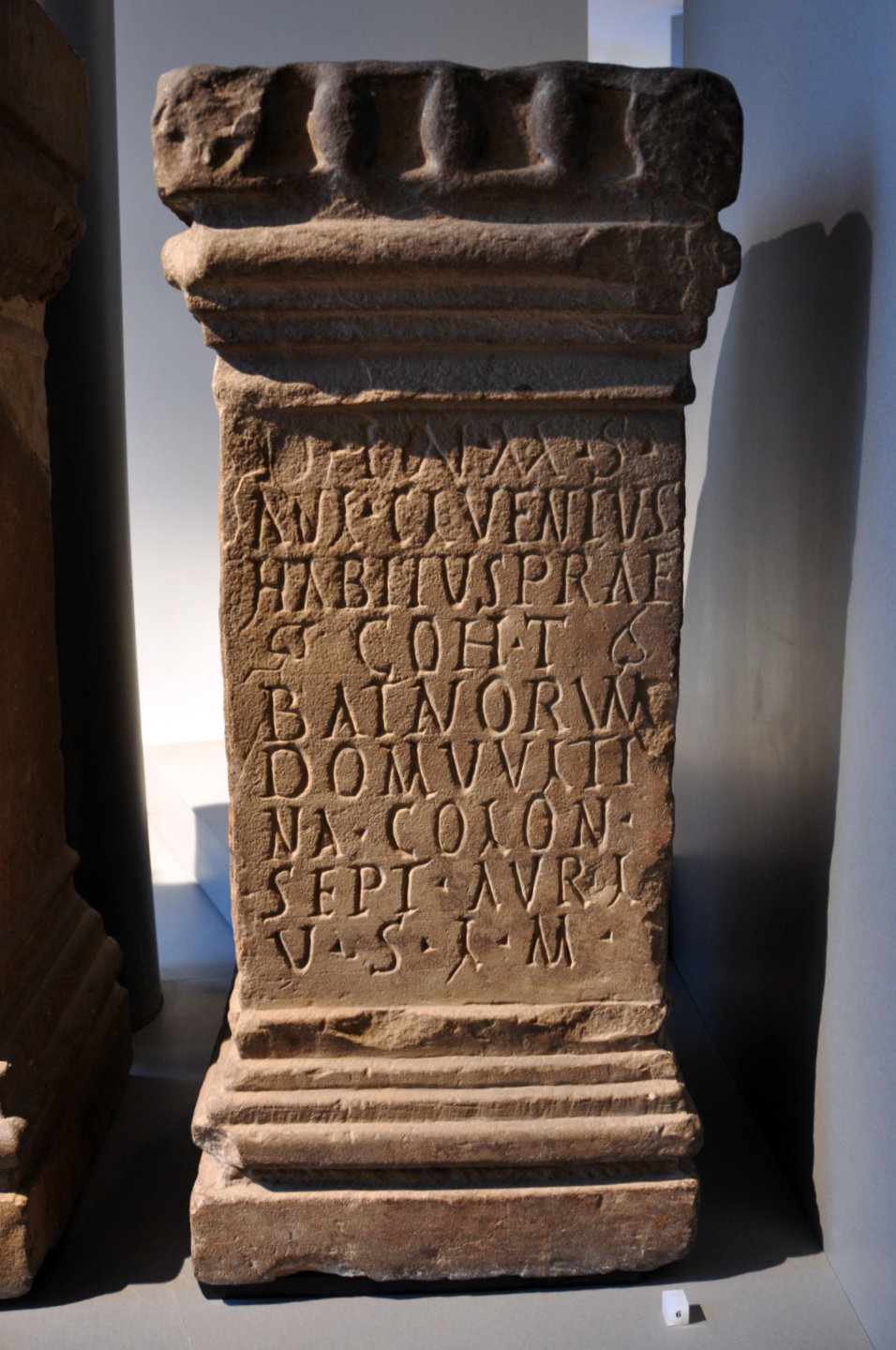Monumentum
Altar of Carrawburgh by Aulus Cluentius
One of the three altars to Mithras found at the Mithraeum of Carrawburgh fort.
The New Mithraeum
17 Mar 2022
Updated on Nov 2022
The full article is reserved for our members.
Log in or create a free account to access the entire site.
D(eo) in(victo) M(ithrae) s(acrum) / Aul(us) Cluentius / Habitus pra(e)f(ectus) / coh(ortis) I / Batavorum / domu Ulti/n(i)a Colon(ia) / Sept(imia) Aur(elia) L(arino) / v(otum) s(olvit) l(ibens) m(erito).
On either side of Coh. I an ivy-leaf.
The dedicator belongs to the family of Aulus Cluentius Habitus, defended by Cicero in 66 B.C.
As appears from this inscription, Larinum became a colonia between 198-208 A.D. (E. Birley).
ILN 1951,455; Richmond-Gillam, 45ff and PI. XI, A.
Professor Birley, in discussing the dedicator, notes that this
…

